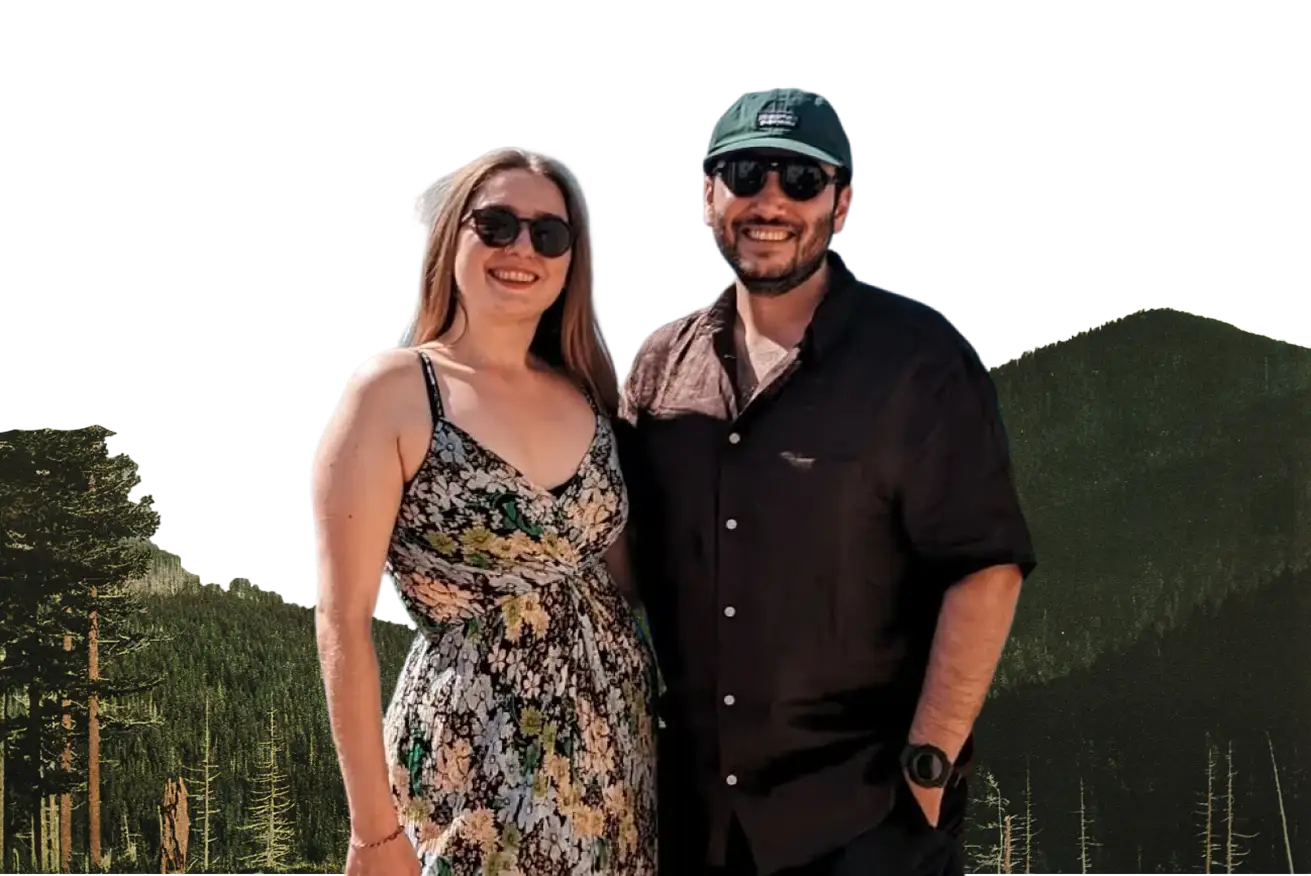On a remote, sun-drenched hilltop in Southeast Turkey stands Göbeklitepe, a name that has sent ripples through our understanding of ancient history. Here, archaeologists have unearthed astonishing evidence: massive, artfully carved stone pillars arranged in circles, dating back nearly 12,000 years.
This isn't just another ancient ruin; Göbeklitepe challenges some of our most fundamental ideas about the dawn of civilisation. It suggests that the powerful human desire to create large, shared spaces for important gatherings or ceremonies – perhaps humanity's first "temples" – may have existed long before settled farming and villages, the very things we once thought were necessary for such grand undertakings.
This discovery doesn't just add a new detail to our history books; it prompts a significant revision of the very beginning of our story as complex human societies. We, Ola and Riza, first encountered Göbeklitepe – meaning "Potbelly Hill" in Turkish – through academic articles. But it wasn't until we stood on that windswept Anatolian plateau (Anatolia is the Asian part of modern Turkey), the air surprisingly cool despite the strong sun, that the great challenge it presented to conventional historical timelines truly began to resonate. This is the story of that place, an archaeological revelation, and the deep questions it unearths about who our distant ancestors were, and when our intricate human journey towards civilisation truly began.
Uncovering an ancient puzzle: The story of Göbeklitepe's discovery
For many years, Göbeklitepe was just another hill, its secrets hidden beneath the earth. Initial surveys in the 1960s noted some limestone pieces but dismissed them as unimportant – perhaps from an old, forgotten cemetery from the Byzantine era (the Eastern Roman Empire, roughly 4th to 15th century CE). It took the sharp eye and deep curiosity of a German archaeologist, Klaus Schmidt, to see something different when he revisited the site in 1994. Schmidt was an expert in very early human settlements and their tools. He noticed many prehistoric flint tools, clearly not Byzantine, and realised the hill wasn't entirely natural. It was a ‘tell’ – an artificial mound created by people living and building in the same spot over thousands of years. He became convinced that something much older and far more important was buried there.
Systematic digging, called excavations, began in 1995, led by Klaus Schmidt in cooperation with the Şanlıurfa Museum (a major local museum where many of Göbeklitepe's finds are now displayed) and the German Archaeological Institute. What they started to find was truly breathtaking. It wasn't a village with ordinary houses. Instead, they uncovered a complex of large circular and oval structures, some as wide as 20 metres (about 65 feet). Standing within these circles were huge T-shaped pillars made from local limestone. Some of these pillars were over 5 metres (about 16 feet) tall and weighed many tons – to give you an idea, a large African elephant weighs about 5-6 tons, so these pillars were monumental.
We remember seeing copies and models of these in the Şanlıurfa Museum before visiting the site itself, and even then, their true size was hard to imagine. Then, at the actual site, standing among the original pillars under their modern protective roof, their powerful presence – both their physical size and their incredible age – felt overwhelming. Interestingly, it seems these ancient builders deliberately filled in the older circular structures with dirt, stones, and animal bones before building new ones nearby or on top. This careful burial, almost like putting a sacred past to rest before starting anew, is one reason why Göbeklitepe was so well preserved for thousands of years, a hidden gift for us to find.
A temple before farming? A revolutionary idea on the timeline of history
The most amazing discovery from Göbeklitepe came from radiocarbon dating, a scientific method used to find out how old organic materials (like charcoal from ancient fires) are. The results were astonishing: the oldest layers of Göbeklitepe were built around 9600 BCE (Before Common Era). Let that date sink in: nearly twelve thousand years ago. That's about 6,000 years before Stonehenge in England was built, and around 7,000 years before the famous Pyramids of Giza in Egypt were constructed. To put it another way, the span of time separating Göbeklitepe from the Pyramids is greater than the time separating the Pyramids from us today!
This incredible age firmly places Southeast Turkey, and human history itself, in a period of deep antiquity, much older than we previously thought for such large, organised projects. It pushes the beginning of monumental architecture (large, impressive human-made structures) far back into what archaeologists call the Pre-Pottery Neolithic A period. The Neolithic period, or New Stone Age (roughly 10,000 BCE to 4,500 BCE in this region), was the era when humans began to transition from a nomadic hunter-gatherer lifestyle to farming, domesticating animals, and living in settled villages. "Pre-Pottery" means this specific phase was before pottery was widely used, making the achievements at Göbeklitepe even more remarkable. For a long time, we imagined people in this very early Neolithic period lived only in small, mobile groups, focused purely on survival.
And who built Göbeklitepe? All the evidence found so far points not to settled farmers, but to these very hunter-gatherers – people who hunted wild animals and gathered wild plants for food. In the oldest excavated layers, there are no signs of farmed plants or domesticated animals, and no permanent houses like those found in later farming villages. Yet, these people had the social organisation, the technical skills, and the shared belief or purpose to quarry, transport, intricately carve, and set up these massive stone rings. We remember looking at the carvings on the pillars – a whole collection of animals like foxes, snakes, wild boars, cranes, and vultures, all made with such skill and artistic vision. These are not simple first attempts at art; they are confident expressions of a complex symbolic world.
It was Klaus Schmidt himself who summed up the site’s revolutionary importance in a now-famous phrase: "First came the temple, then the city." This simple statement turns a long-held idea in archaeology on its head. It suggests that the need for large-scale communal gatherings, perhaps for rituals or ceremonies in a shared sacred place, might have been the very thing that brought people together, encouraging the cooperation and new ideas that later led to settled farming life and eventually cities – not the other way around.
An ancient meeting place in the fertile crescent: Understanding the "why"
Göbeklitepe's location is also very significant. It’s in the northern part of the Fertile Crescent, a large, arc-shaped area of relatively fertile land in the Middle East. This region stretches from Egypt, through modern-day Israel, Palestine, Jordan, Lebanon, and Syria, across Southeast Turkey (where Göbeklitepe is), and down into Mesopotamia (modern Iraq), the land between the Tigris and Euphrates rivers. For thousands of years, the Fertile Crescent was a key area for human development because it was home to the wild ancestors of many plants and animals that humans would later learn to domesticate (like wheat, barley, sheep, and goats) – a true "cradle of agriculture."
While southern Mesopotamia later saw the rise of great city-based civilisations like Sumer (often called the world's first urban civilisation, known for inventing writing around 3200 BCE), the northern part of the Fertile Crescent, where Göbeklitepe stands, was different at that very early time, around 9600 BCE. It was a rich environment for hunter-gatherers, with plenty of wild animals and plants. It’s possible that because food was relatively easy to find, these groups didn't always have to move around constantly. This might have allowed larger groups to live in one area for longer periods, or for different groups to come together at certain times of the year for important shared activities – like building Göbeklitepe.
So, the building of Göbeklitepe might have been a huge, shared project for these groups, perhaps like a "cathedral in the wild" as some have called it. It probably wasn't built for a god living inside it, but perhaps as a special place for rituals, for watching the stars (archaeoastronomy), for strengthening social bonds between different groups, or for sharing important stories and myths. All this was happening at a time when humanity was on the edge of one of its biggest changes ever – the move towards farming, often called the Neolithic Revolution. The massive effort involved shows there was a powerful, shared "why." What was it? Were these T-pillars stylised human figures representing ancestors, powerful animal spirits, markers for the sun and stars, or something else we can't yet understand? The stones don't give us all their secrets, leaving us to think about the incredible human determination and shared vision they represent.
Göbeklitepe doesn't offer easy answers. Instead, it leaves us with a profound sense of wonder and a cascade of essential questions about our deepest past. It speaks of a human story far more complex, ancient, and perhaps more spiritually driven from its earliest days than we once believed. The discoveries at Potbelly Hill are a powerful reminder that our understanding of human history is always evolving, and that the most important finds are often those that challenge our deepest assumptions about who we are and where we truly come from.
.svg)




